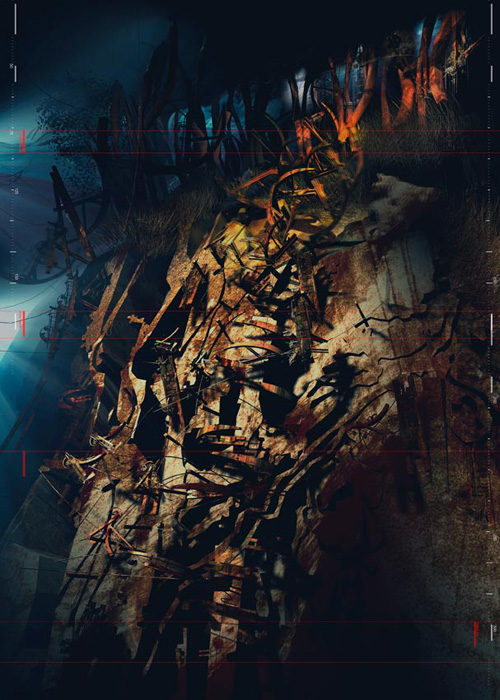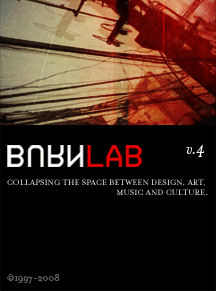AVATAR [Advanced Virtual and Technological Architecture Research Laboratory] is a cross unit research group at the Bartlett School of Architecture formed in 2004.
Christian Kerrigan
Areas of study include subjects such as Sensitive Machines, Cybernetic Geographies, Memory, Narrative and Anamorphosis.
Some quotes from Director Neil Spiller:
Philosophically and artistically, AVATAR is convinced that the new technologies prompt a re-evaluation of Surrealist spatial protocols and tactics. Also it believes that Alfred Jarry's proto- surrealist poetic pseudo science of 'Pataphysics and its idea of the 'Clinamen"- the swerve (chance) has great import on what we do. The choreography of digitally enabled chance allows us to create architecture of blossoming possibility where events are fleeting, exceptional and particular.
The most important paradigm shift sustained by the new media and technology with its consequent ubiquity is that of the liberation of the user from the stylistic and spatial dictates of aesthetic fascists like architects, politicians and planners. As this Century progresses this tyranny will become less and less legislated. The ability of users to configure spaces that are mnemonic, high and low coded, personal and transmittable is swiftly accelerating. Music appreciation, for example, has become a evolving virtual terrain, music collections can be invisible, remixed, shared, distributed around rooms as invisible but aural graffiti, play listed to infinite satisfaction. Geo tags can be left all around the world to offer insight, polemic, warning and delight. We can make the traces of our lives readable as a new social archaeology...
[Man, I can not get enough of stuff like this. Love it!]
Firstly it is important to stress that "Post-Digital Architecture" is not an architecture without any digital component. Indeed it an architecture that very much is a synthesis between the virtual, the actual, the biological, the cyborgian, the augmented and the mixed. It is impossible, anymore, to talk of Digital Architecture as a binary opposition to normal real world architecture. Cyberspace has insidiously insinuated itself into our existence, at every scale and at every turn.
Murray Gell-Mann defines "Plectics" as the "...the study of simplicity and complexity. It includes the various attempts to define complexity; the study of roles of simplicity and complexity and of classical and quantum information in the history of the universe, the physics of information; the study of non-linear dynamics, including chaos theory, strange attractors, and self-similarity in complex non-adaptive systems in physical science; and the study of complex adaptive systems, including prebiotic chemical evolution, biological evolution, the behaviour of individual organisms, the functioning of ecosystems, the operation of mammalian immune systems, learning and thinking, the evolution of human languages, the rise and fall of human cultures, the behaviour of markets, and the operation of computers that are designed or programmed to evolve strategies - say, for playing chess, or solving problems."
Cybernetic Circus by Michael Wihart
[Could you imagine how much more awesome things would be if everyone thought this hard about why and how they do what they do?]
More from Professor Spiller:
...No two designers are the same, no two designs the same, no two sites are the same and no two observers or users are the same (and all change over time and have varying durations). These facts have led me to view the world as exceptional, as particular, as a series of cybernetic personal and conversational mnemonic events. My design work within this blooming tapestry should do nothing more than exploit this systematic paradigm and create poetic moments in its interstitial spaces.
[This line of thinking isn't limited to architecture - it applies to all creative fields and is not just philosophical, but both urgently in the now and timelessly fundamental.]
So post-digital design must attempt to be immune to sophist arguments of style and good taste. It should rejoice in the particular and the "I" who and whatever is the "I" (We must remember that objects can now become "I" to a growing extent.)
[Nice simultaneous reference to Rand and Asimov there.]
Above all post digital design is relativistic, glocal, ascalar and constructed from a genius loci that does not just include anthropomorphic site conditions but also includes deep ecological pathways, mnemonics, pychogeography and narrative.
--
Arguably a little heavy-handed on the Greek and Roman references, but I think Spiller nails it here. It's essentially a Gestalt tuned for the 21st century. Click the first link for the full text. There is a list of AVATAR terms there, which reminds me of Lebbeus Woods' Anarchitecture Glossary - the first time I've really understood the correlation between cybernetics and architecture, and a big part of why I got involved with experience design early on.
I've also had a half-written essay about Cyberpunk architecture sitting on the backburner for years - for an eventual book about Form:uLA Dimension Laboratories. After reading the AVATAR manifesto, I may just have to dust that off rethink it.
Sunday, July 13, 2008
AVATAR: Plectic Architecture
Posted by:
Unknown
at
7/13/2008 01:04:00 PM
![]()
Subscribe to:
Post Comments (Atom)

No comments:
Post a Comment